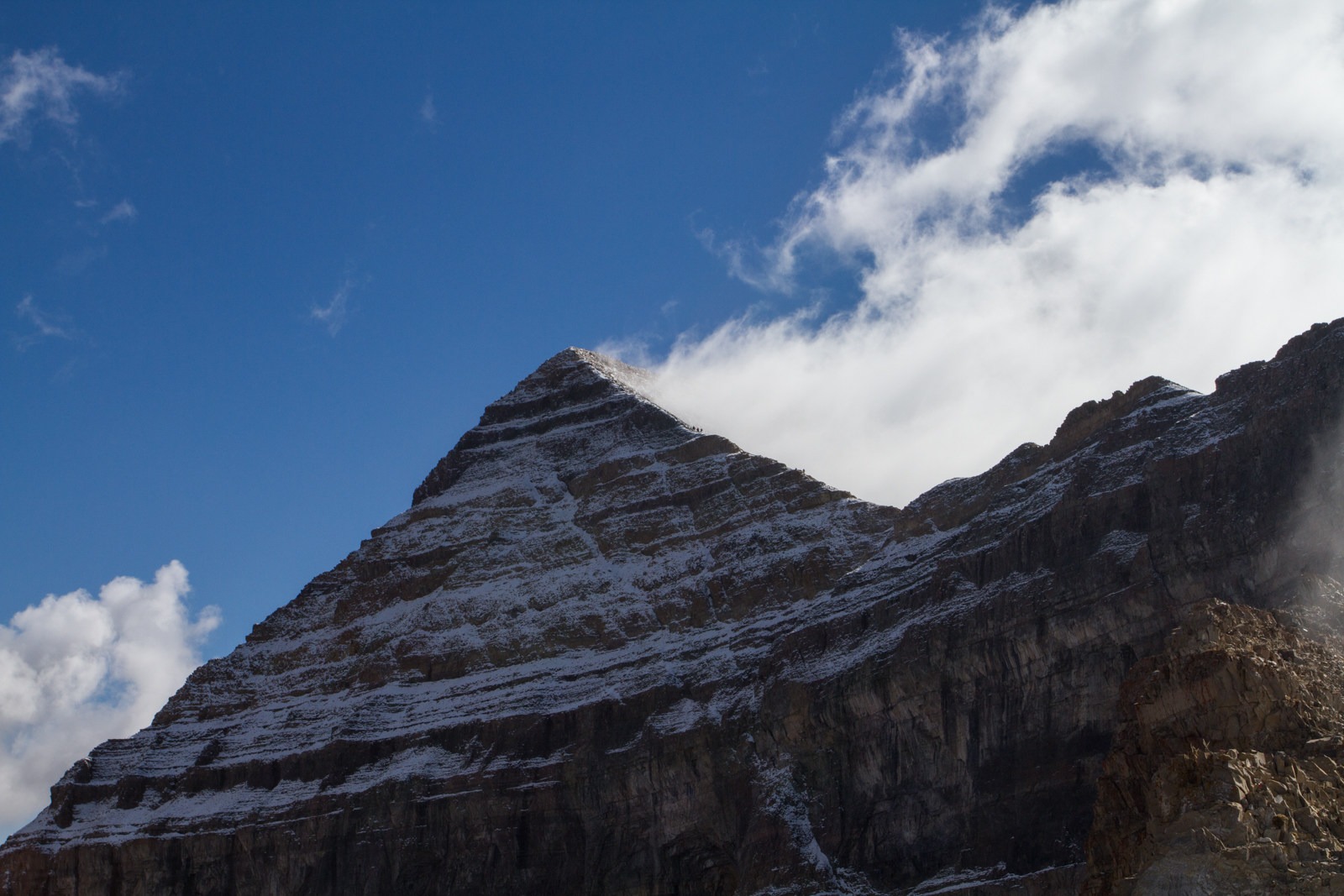You are here
Mount Timpanogos is one of the premier mountain hikes in Utah. The second tallest peak in the Wasatch, Timpanogos offers hikers sparkling alpine lakes, a remnant glacier, a herd of mountain goats, and magnificent views in all directions. Probably the only downside is that hiking “Timp” makes for a long day, and you’re not likely to have the trail to yourself, especially on a Saturday in summer. There are two trails that lead to the summit: the Timpooneke Trail and the Aspen Grove Trail. Both are well worth the trip, but at 6.8 miles long, Aspen Grove is a little shorter. However, with 4,860 feet of elevation gain, Aspen Grove is slightly steeper than the Timpooneke Trail's 4,580 feet. You’ll also have more opportunities to get water (purify first), and a higher chance of glimpsing a mountain goat along the Aspen Grove Trail.
Timpanogos is a huge massif that spans nearly 7 miles from north to south with multiple peaks over 11,000 feet and massive glacier-carved basins. The mountain gets its name from the Paiute word for the Provo River, which means “rock and running water.” Its extensive high country is home to deer, moose, and pikas as well as mountain goats and the occasional mountain lion or black bear.
From the parking lot, the first stretch of the trail is paved and leads through an open forest of aspen and Douglas fir. You’ll pass a guard station a short distance up the trail where you should sign in during the summer. The trail climbs a series of switchbacks and passes several waterfalls and small streams as it ascends the slopes of Primrose Cirque. One giant, gradual switchback seems to go the wrong way (east) before heading back to the west, crossing a series of limestone terraces.
The route continues through a grove of Englemann spruce where some campsites may be found at about 9,500 feet before emerging in an open basin. Rolling grassy terrain hides a few small lakes (called Hidden Lakes, appropriately enough) and more camping possibilities. Continuing up the slope, Timpanogos Shelter and Emerald Lake appear shortly. Above the lake lies the remnant glacier, which provides a more adventurous route up (ice axe and crampons needed) or down. Sliding down the snowfield is popular and exhilarating, but is the most common cause of injuries on the mountain.
After leaving the shelter the trail continues along a rocky shelf overlooking the broad expanse of Timpanogos Basin, then it climbs to meet the Timpooneke Trail at a saddle. From the saddle the trail winds up the west side of the mountain. There is no scrambling here, but the route feels exposed in places as you traverse rocky ledges. In the early or late season, an ice ax and crampons may be needed. Early season hikers must also be very careful of fragile snow bridges on the way up Primrose Cirque. This is a big mountain, and it may not be safe for those without some mountaineering experience until mid-July. In winter, the route ascends through multiple large avalanche paths and is a serious endeavor.
At the summit a shelter provides a bit of protection from the weather and invites hikers to sign the summit register—or the walls of the shelter itself, which are periodically repainted (bring a Sharpie). Great views are all around, from the Heber Valley to the east to Utah Valley in the west, where the mountain’s steep slopes drop 7,000 feet to meet the valley floor. To return, go back the way you came, or descend to the south to take the glacier route to Emerald Lake.
Other nearby attractions on the Alpine Scenic Loop include Cascade Springs, Stewart Falls, and Timpanogos Cave National Monument.
Logistics + Planning
Current Weather: Powered by Dark Sky






























Comments
Sign In and share them.